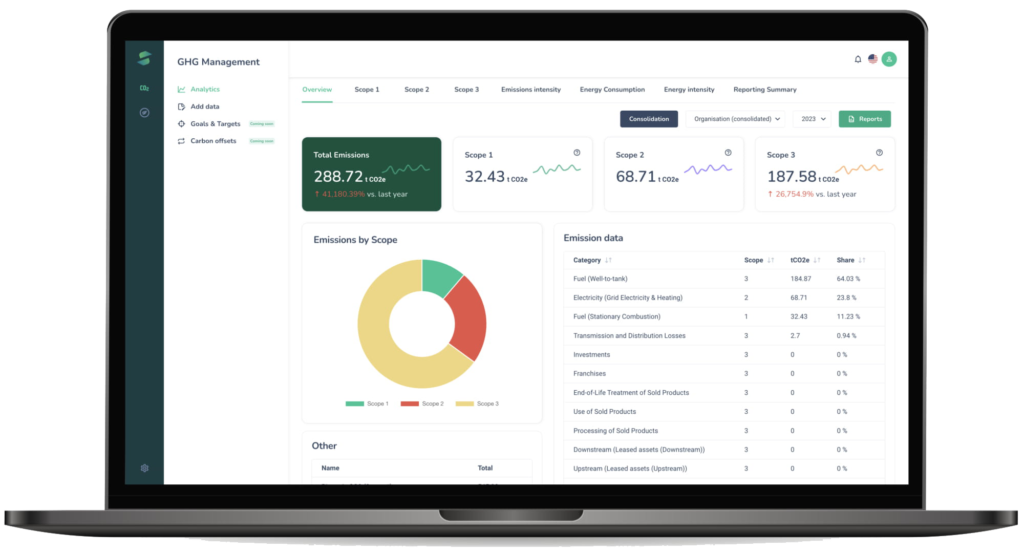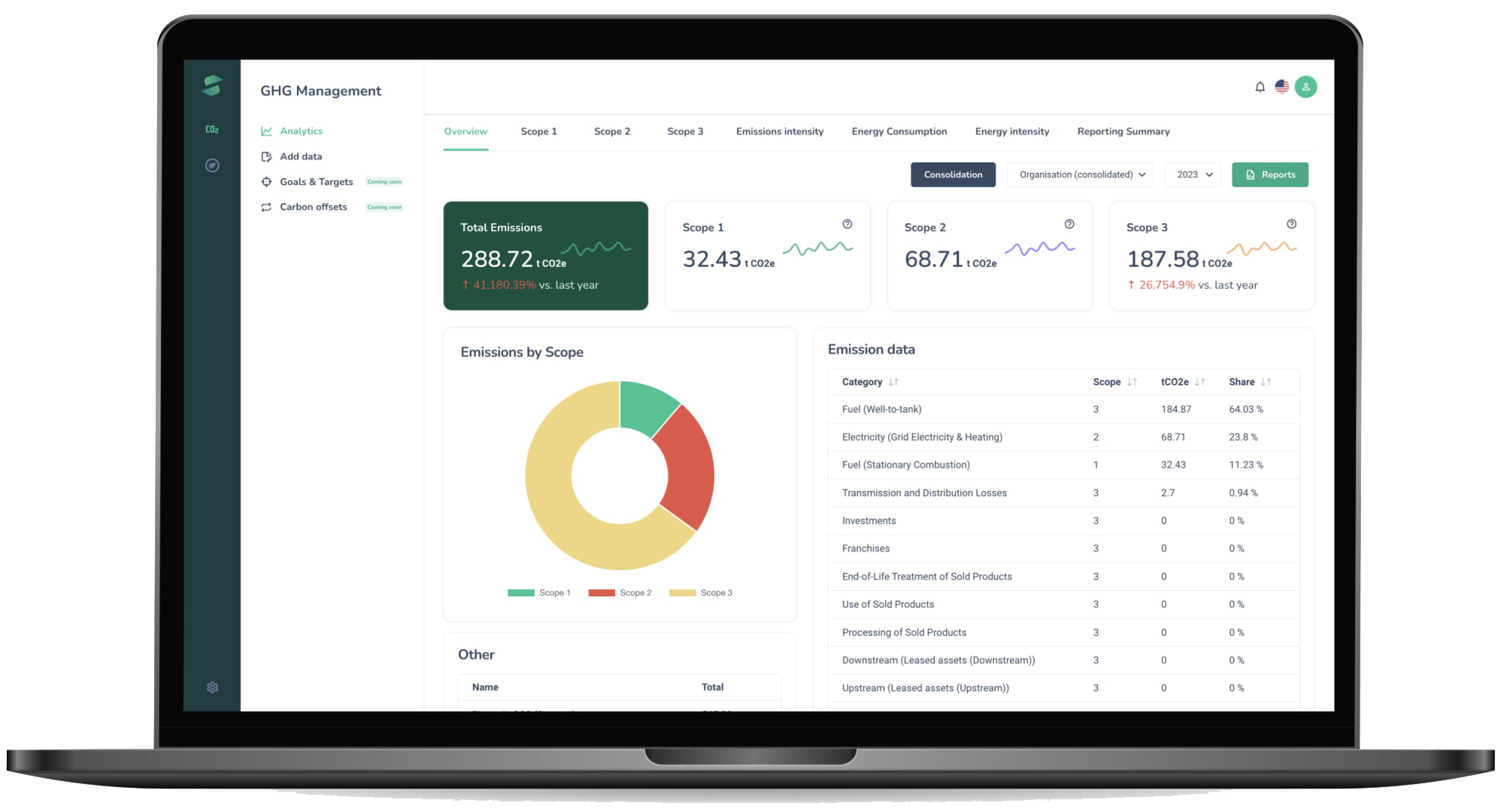
Calculate GHG footprint and take action in weeks, not months
With our certified calculation software and guidance of a Dedicated Climate Expert you can calculate, analyse and begin working on your carbon reduction strategy in a few weeks. Do it even faster with automated data input integration.

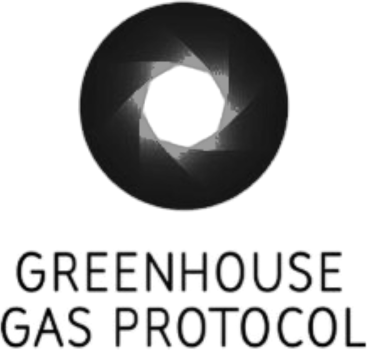


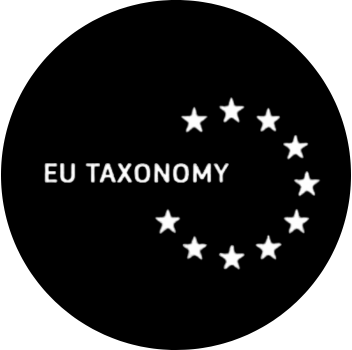

Measure. Report. Decarbonise.
Regardless of whether emissions are being evaluated for the 1st or the 10th time, the process is fairly similar and well defined.
Measure your footprint
Collect data and calculate your impact over the entire value chain.
This includes both, direct (Scope 1) and indirect (Scope 2 and Scope 3) emissions.
Analyse and report
Understand your impact with our advanced analytics dashboard.
Identify hotspots and report to authorities using One-Click-Reporting in accordance with GRI or ESRS.
Reduce and remove
Take action by implementing carbon reduction initiatives or removing remaining carbon from the atmosphere.
Sustainalyse ProgressTracker™ will help you see where you stand.
How it works
A short overview of the entire carbon footprint calculation process.
Set boundaries
Decide which parts of your Organisation should be included based on your selected consolidation method
Identify sources
Define emisison sources based on your operations and processes
Compile inventory
Complete your inventory to reflect your GHG emitting business activities
Collect and add data
Gather required information, Sustainalyse does the calculations for you
Analyse results
Advanced analytics dashboard provides detailed insights into your hotspots
Report your footprint
Use One Click Reporting feature to generate report in one of the popular formats
What to expect in each emissions Scope
See what it stands for and what kind of information you might need get an accurate carbon footprint measurement
- Scope 1
- Scope 2
- Scope 3
- Transport emissions
- Product emissions
Direct emissions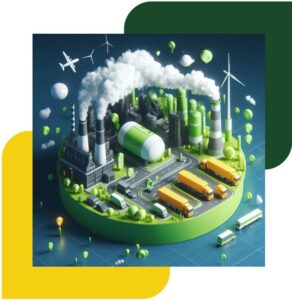
Scope 1 emissions represent direct emissions from sources that are owned or controlled by your organization. These include emissions from activities such as fuel combustion in owned vehicles and onsite machinery.</>
Gathering information for Scope 1 involves tracking fuel usage, energy consumption, and other relevant data points within your operational boundaries to provide a comprehensive understanding of your organization’s carbon footprint.
Indirect emissions
Scope 2 emissions encompass indirect emissions associated with purchased electricity, heating, cooling, or steam consumed by your organization. These emissions occur from the generation of purchased energy, typically offsite.
Gathering information for Scope 2 involves obtaining utility bills or invoices to quantify energy consumption accurately. Understanding Scope 2 emissions allows your organization to identify opportunities for energy efficiency and renewable energy adoption.
Other indirect emissions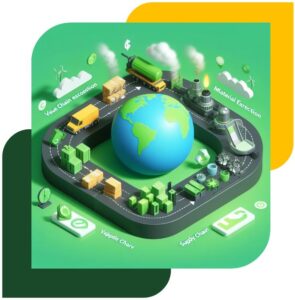
Scope 3 emissions cover all other indirect emissions that occur in the value chain of your organization, including both upstream and downstream activities. This includes emissions from purchased goods and services, business travel, employee commuting, and transportation and distribution.
Gathering information for Scope 3 involves engaging with suppliers, partners, and stakeholders to collect data on various aspects of your organization’s activities beyond direct operations, enabling a holistic approach to carbon accounting.
Transport fleet emissions
Evaluate based on the Global Logistics Emissions Council (GLEC) framework, provide a structured approach to accounting for emissions associated with transportation activities. This framework considers emissions from various modes of transport, including road, rail, air, and sea freight.
Gathering information for transport emissions involves collecting data on distances traveled, fuel consumption, vehicle types, and transportation modes used in your supply chain and operations. Utilizing the GLEC framework ensures consistency and accuracy in measuring and reporting transport-related emissions, facilitating informed decision-making to reduce carbon footprints. Product-level emissions
Calculating product-level emissions involves assessing the carbon footprint associated with the entire life cycle of a product, from raw material extraction to end-of-life disposal. This includes emissions from manufacturing, distribution, product use, and disposal or recycling processes.
Gathering information for product-level emissions requires data on material inputs, energy consumption, transportation, and waste management practices at each stage of the product’s life cycle. By quantifying product-level emissions, organizations can identify opportunities for eco-design, supply chain optimization, and sustainable product innovation to minimize environmental impact and meet sustainability goals.
The backbone of a solid action plan
Measuring and understanding your footprint sets the foundation for a robust strategy, reduction targets, and overall positive change. We offer our expertise to eliminate complexity and ambiguity from your environmental tracking and reporting duties.
100+
companies already trusted Sustainalyse to be their climate partner
1.5M+ tCO2e
accounted for in the last year alone...and counting
90%
of companies said that understanding CO2 hotspots in their value chain started cost saving initiatives

